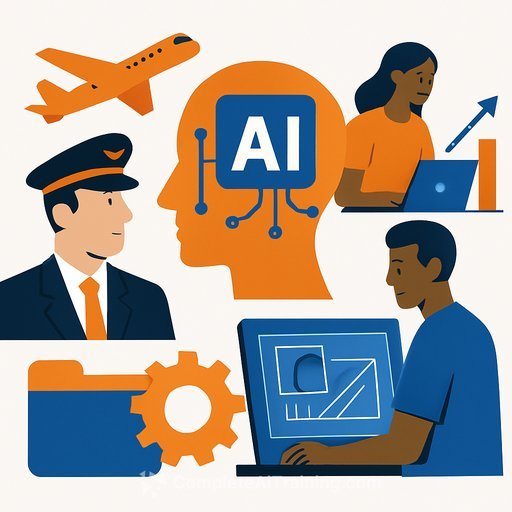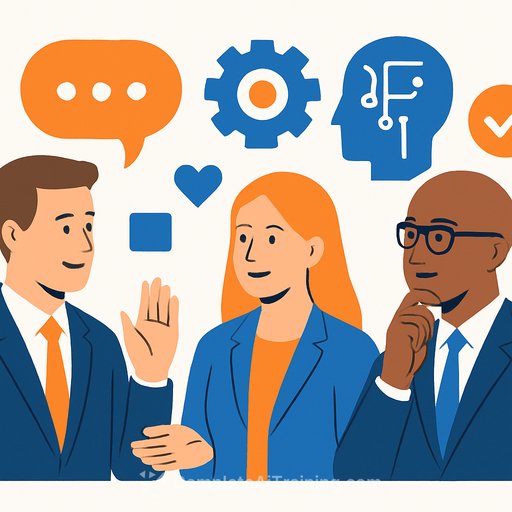Crafting Your Future-Ready Workforce
Change is happening fast. HR teams that reskill people, redesign work, and act decisively will stay ahead. The rest will feel the drag.
Focus on three areas: skills, work design, and manager capability. Execute on these and you'll build a workforce built for tomorrow's demands.
1) Build a Skills-Based Organization
Jobs are lagging indicators. Skills tell you what people can do now and what they can do next. Shift your operating system from roles to skills.
What to do this quarter
- Name your top 10 critical capabilities tied to strategy (e.g., AI literacy, data fluency, customer insight).
- Run a skills inventory using self-assessment plus manager validation. Keep it light, then iterate.
- Map skill adjacencies so people see practical next steps from their current role to priority skills.
- Launch 8-week reskilling sprints with weekly practice, a real project, and peer feedback.
- Measure: time-to-skill, internal fill rate for critical roles, and percentage of workforce with verified skills.
2) Redesign Work for Speed and Impact
Static roles slow you down. Break work into projects and gigs so talent moves to the highest-value problems quickly.
Quick wins
- Simplify job architecture to reduce titles and clarify career paths by skill bands.
- Stand up an internal talent marketplace for short-term gigs, stretch projects, and cross-functional sprints.
- Automate low-value tasks with safe AI and workflow tools, then reskill people for higher-impact work.
- Scenario plan quarterly for skills demand so workforce plans track strategy, not last year's org chart.
- Measure: project cycle time, cross-team mobility, and percent of roles supported by automations.
3) Equip Managers to Lead Change
Managers set the tone. If they coach, teams learn. If they avoid feedback, teams stall.
Enablement plan
- Coach-first training: set weekly 1:1s, use performance enablement instead of annual-only reviews.
- Data and AI literacy: teach managers to read simple dashboards and use AI tools responsibly for prep and follow-ups.
- Clear rituals for hybrid work: response norms, meeting rules, and decision logs.
- Psychological safety: leaders go first with lessons learned; make it safe to test and improve.
- Measure: quality of 1:1s, goal progress rates, and team engagement on "learning and growth."
Metrics That Matter
- Internal mobility rate in critical paths.
- Time-to-skill for priority capabilities.
- Percent of roles with skills profiles and verified evidence.
- Attrition in critical roles vs. baseline.
- Project cycle time and rework reduction.
- Manager effectiveness scores tied to coaching and clarity.
30-60-90 Day Plan
Days 1-30
- Pick three critical capabilities. Align with Finance and Strategy.
- Baseline skills for two functions with a simple survey plus manager check.
- Draft a manager playbook: 1:1s, feedback, goals, and rituals.
Days 31-60
- Run a pilot reskilling sprint for one capability with 50-100 employees.
- Launch a small internal gig board. Fill five projects with cross-team talent.
- Train managers on coaching and responsible AI use.
Days 61-90
- Scale what worked. Add skills profiles to job postings and internal moves.
- Link recognition and pay progression to verified skills where appropriate.
- Publish a simple skills dashboard and review it monthly with leaders.
Helpful Resources
- World Economic Forum: Future of Jobs Report for trend data on skills and roles.
- SHRM: Skills-Based Hiring for practical guidance on shifting from credentials to skills.
Upskill Your Team in AI
If AI skills are on your critical list, point people to curated, job-aligned programs and keep learning in the flow of work.
- AI courses by job role to map learning to specific HR and business functions.
- Latest AI courses to keep content current and actionable.
You don't need a giant transformation. Start with clear skills, flexible work design, and manager enablement. Small, consistent moves will compound into a workforce ready for what's next.
Your membership also unlocks:






